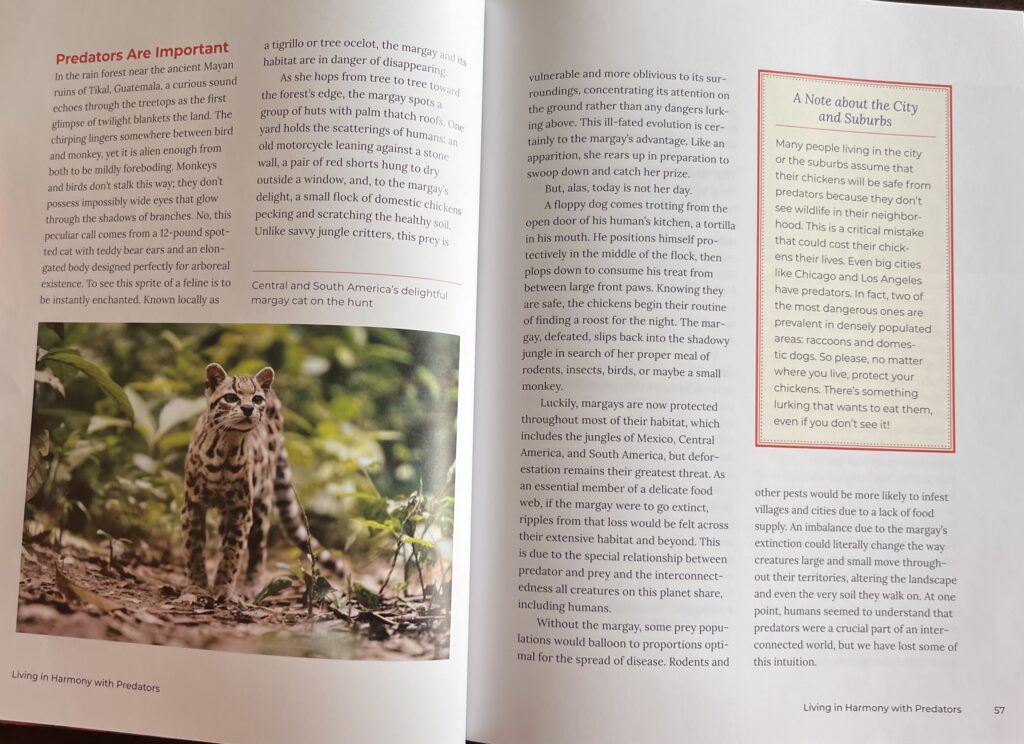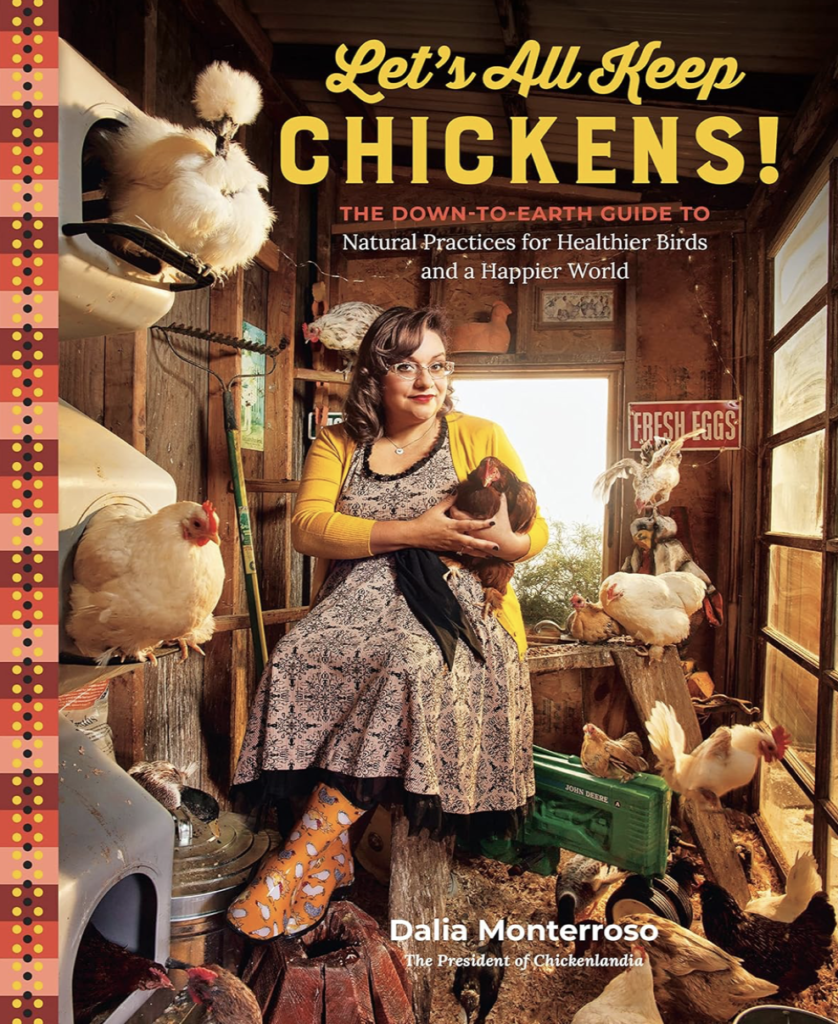
“To be honest, at the time, the traditional ways of keeping chickens seemed like a whimsical dream to me. Of course, I respected these practices and was curious about them, just as I am curious about all ancestral ways, but they just didn’t seem relevant to me or my students. Since I’ve always referred to my chickens as beloved family pets, I thought the only way to care for them properly was to spend a lot of money. I’d accepted the fact that I needed to have a certain level of income to be a good chicken keeper. I didn’t understand that I could embrace a more sustainable and inclusive way of keeping chickens, while also cherishing them as much as I do. But then, everything changed.”
For many years, I have been intrigued by the idea of keeping chickens. I love the idea of having a regular supply of eggs, but even more than that, I just find chickens to be very interesting. We couldn’t keep them in our old neighborhood, so when we purchased this house a few years ago, we made sure that there were no prohibitions against keeping chickens. Once we were here, however, I began to feel overwhelmed by all of the things we would need and all of the things we would need to know if we were going to do this. I stalled.
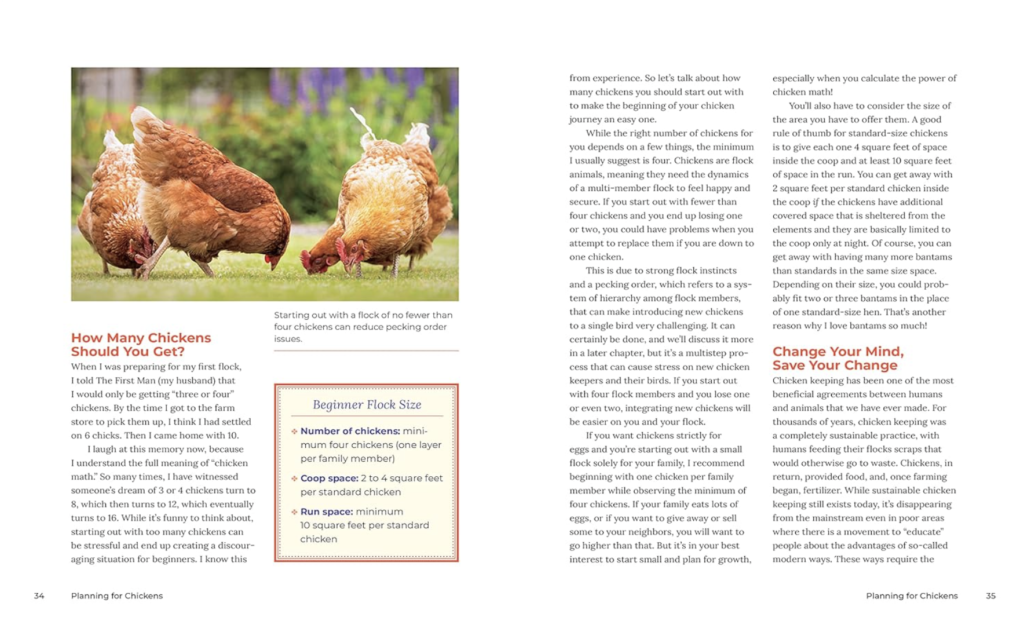
Dalia Monterroso reached out to us, thinking that there were probably a lot of our readers who might be interested in her book Let’s All Keep Chickens. I really enjoyed her YouTube channel, so I was genuinely curious about her book. I am delighted to say that it is excellent.
If you have always wanted to keep chickens, but don’t know where to start or feel overwhelmed, this is absolutely the book for you. If you’re not sure if you want to keep chickens, but want to do a little investigating, this is also absolutely the book for you.
This book has a delightful storyteller quality to it while being paired with the kind of point of view that we at Plumfield love and appreciate. Dalia is very knowledgeable and experienced with chicken keeping. She has done it on a small scale and on a large scale. She has a real passion for the birds themselves and the culture and traditions of chicken keeping throughout history. In this completely practical book, she shows you how to enter into chicken keeping in a variety of different ways so you can choose the best possible option for your situation.
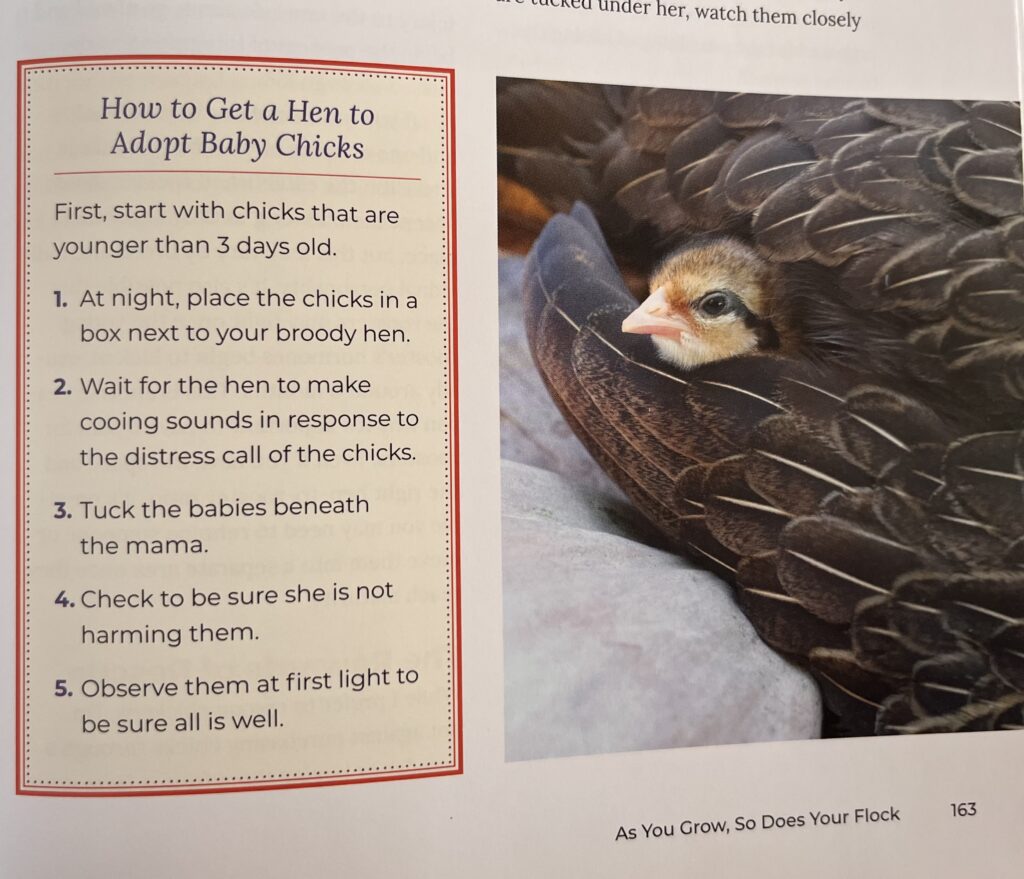
“Chicken keeping has been one of the most beneficial agreements between humans and animals that we have ever made. For thousands of years, chicken keeping was a completely sustainable practice with humans feeding their flock scraps that would otherwise go to waste. Chickens in return, provided food, and once farming began, fertilizer. While sustainable chicken keeping still exist today it’s disappearing from the mainstream even in poor areas where there is a movement to “educate“ people about the advantages of so-called modern ways. These ways require the purchase of feed, medication, expensive, housing, and equipment. What happened? How did chicken keeping go from a sustainable practice to something that actually uses resources and has become out of reach for so many?”
Here at Plumfield, we think most things worth doing are probably much easier to do than culture would lead us to believe. For example, we passionately believe that homeschooling can be extremely simple and natural. Of course, you can buy any curriculum or system supports that you discern are necessary for your homeschool. But, ultimately, we think homeschooling is quite simple. We think that, for the average person, learning to read is also quite simple. And, we think that building a lending library can be pretty simple too. And so, I was delighted to discover that Dalia feels the same way about chicken keeping. Her book is utterly refreshing, while also being completely enjoyable to read.
“I almost didn’t write this book because I was afraid. I thought, what if I don’t know enough? What if I’m not smart enough? I’m not a scientist, a veterinarian, or a farming industry expert. I’m just someone who really loves chickens. But I’m also human, which means there is knowledge in my history. It’s the same knowledge that my great-grandparents Maria and Alberrto used to survive the hardships of their time. And somewhere in your history there is a similar consciousness of resilience and survival. Knowledge and intuition don’t belong to an intellectual perched upon a hill . . . this ancient knowingness is yours. It’s mine. It’s ours. It’s the wisdom of the earth and every time you enter your chicken yard, you gain more and more access to it. It’s a gift of humanity that you have every right to welcome into your life.”
Dalia truly loves her animals. As she said in one of the quotes above, they are her beloved family pets. But, she is also incredibly understanding of the fact that not everybody’s situation is like her own. So, throughout every single chapter, she offers multiple perspectives and techniques for whatever topic she’s tackling. Her passion for ethical, affordable, and sustainable chicken keeping is beautiful. And empowering.
“Before you get chickens, it’s important to ask yourself what you will do with aging hens that no longer lay. In Chickenlandia, my flock lives out its days without any conditions, but I’m not running an egg business or following a super tight budget. I completely understand if keeping aging hens wouldn’t work for you. The only thing I ask is for you to have a humane plan once your hens slow down or stop laying.”
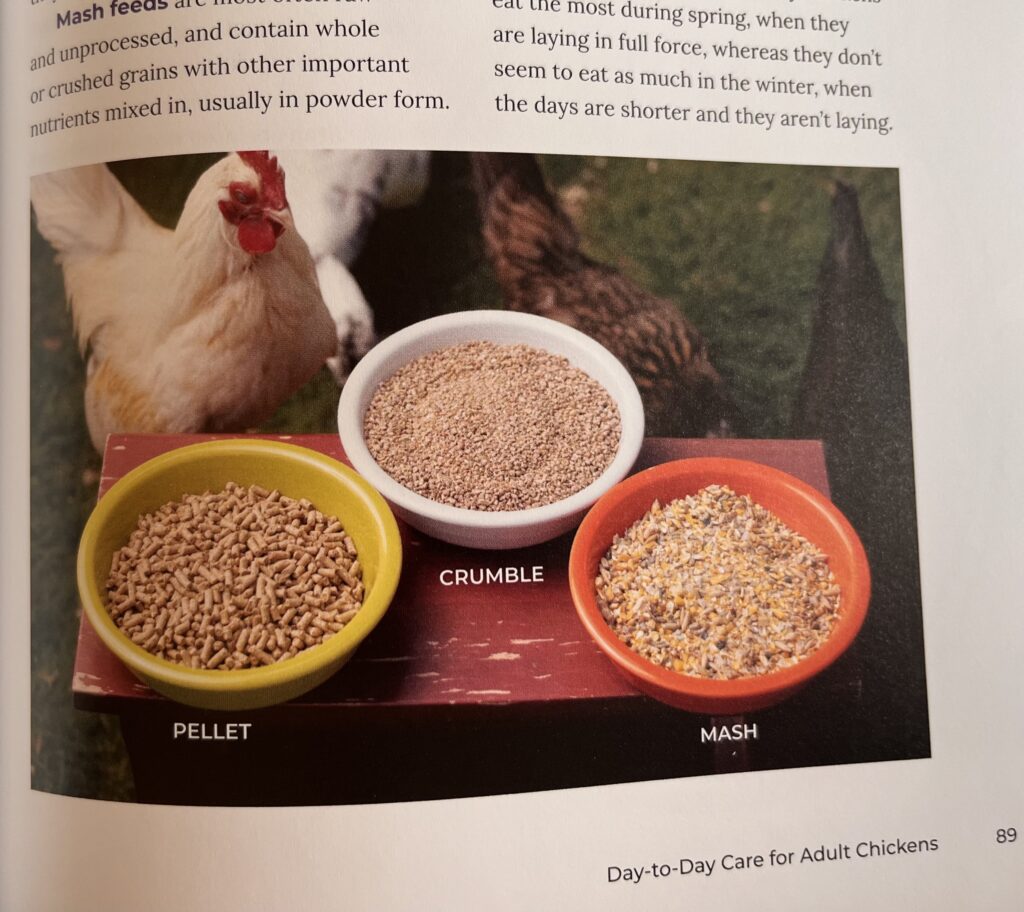
Across 11 chapters, Dahlia gives us all the information we would need to make an excellent decision about whether or not this is something we could or would want to do for ourselves. Each chapter is broken down into one incredibly practical topic, from where and how your chickens sleep, to what to do if you decide to let your hens have chicks, to managing predators, and to providing supportive care when disease settles in. The lively writing on each topic is accompanied by fantastic photos, diagrams, and illustrations. Truly, this little guidebook is packed full of goodness. Before I could write this review, I had to get it back from each of my three children who kept stealing it for their own enjoyment. You can find the book at Amazon.
In case you are curious, here is the Table of Contents:
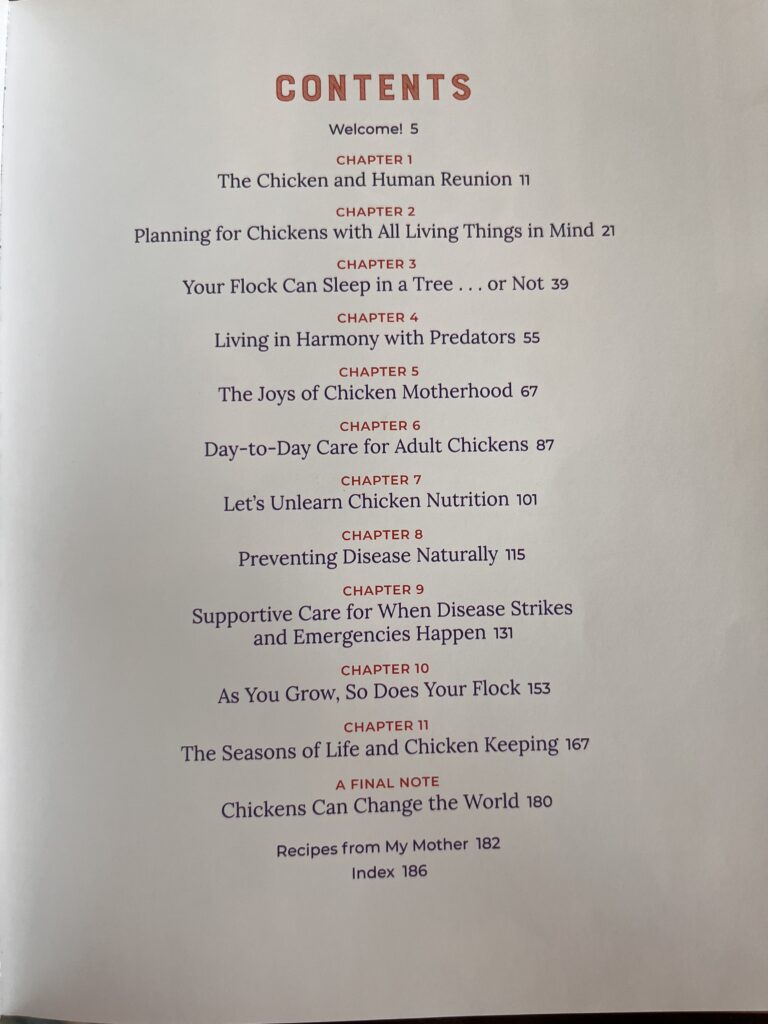
And here are some photos of the illustration:
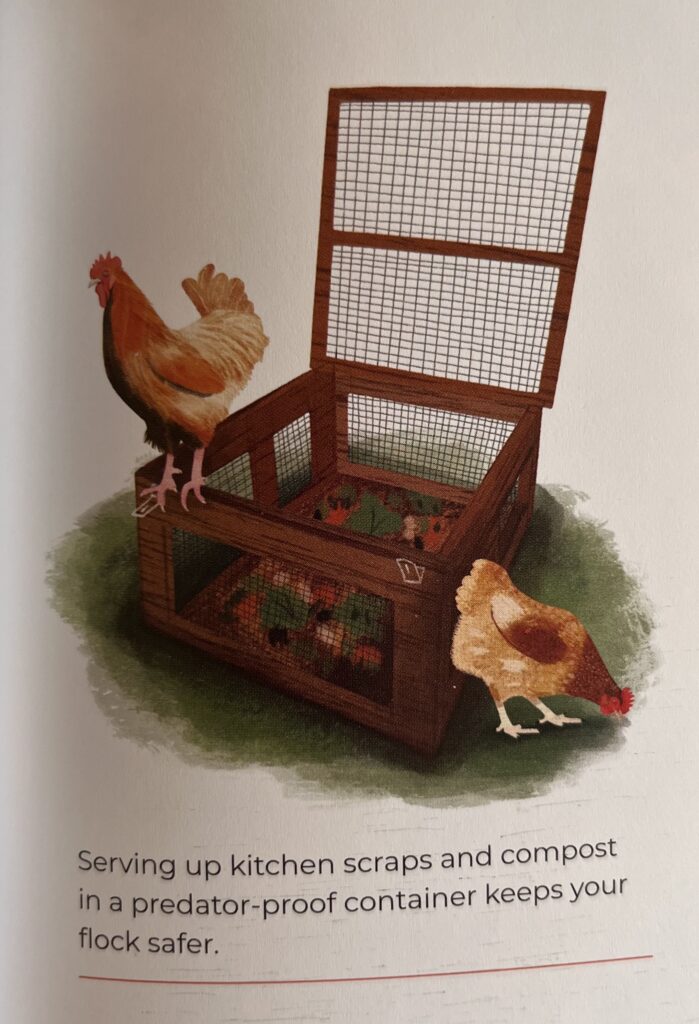
Finally, this is one of my favorite bits. In these photos you can read about the margay predators. These two pages introduce the idea of predators as being a part of the balanced ecosystem. She then spends the rest of the chapter highlighting the various kinds of predators that wish to harm your chickens and what to do to protect against them. I love how she organizes them: The Ones That Creep In, Predators That Squeeze In, The Types That Fly In, Those That Climb In, and The Ones That Dig In.
